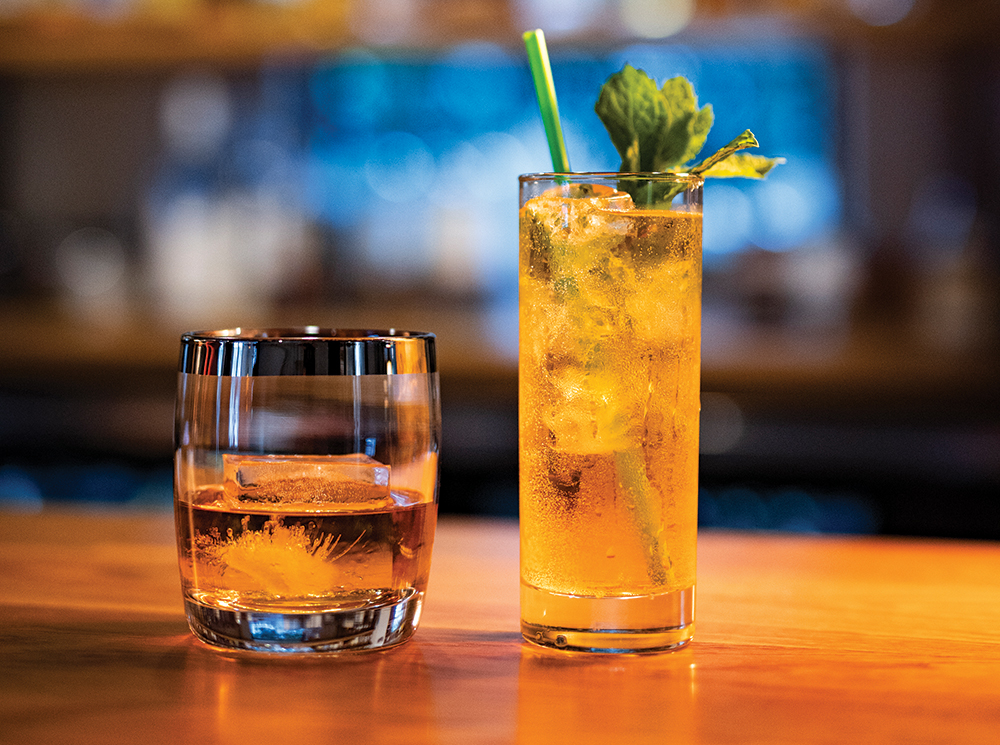Vodka versus Whiskey
A brutal battle.
Article by Fred Minnick
Did you know vodka didn’t have a US federal definition until the late 1950s? It’s true. And when the mostly Russian and Polish spirit started garnering minute amounts of acclaim, the whiskey distillers lobbied the government to create a definition that would surely defeat its popularity. The words “odorless” and “tasteless” appeared in the definition, and it was earmarked as a neutral spirit.
In America, makers must distill vodka to at least 190 proof, or 95 percent ABV, which are the same proof points as ethanol. This essentially strips out all flavor to create a natural spirit, and it’s why people mix it with the likes of Red Bull, orange juice, cranberry juice, and so forth, without really ever tasting the flavor of the alcohol.
After this definition took hold, I’ve often imagined Kentucky distillers kicking back in their recliners, smoking cigars, and laughing, “Ain’t no way vodka’s getting our market share.”
Of course, it did. In fact, in the 1960s, vodka cut through the spirits industry like a hot knife through butter. And nobody could really figure out why. Some thought it was the James Bond craze, wherein the English spy demanded his martinis shaken and not stirred. Others believed vodka’s neutral style wouldn’t allow it to be smelled on the breath, so you could drink three vodkas at lunch, return to work, and the boss wouldn’t smell a thing. Of course, the boss was drinking four martinis at lunch anyway, so he likely didn’t care.

American whiskey was caught flat-footed when the boss and his workers were out drinking martinis at lunch. They lost market share, day after day, until they started pushing back.
At first, they thought consumers wanted lighter proofs, so they started bottling mainstay products at 86 proof versus 100 proof. That didn’t work.
Then, somebody had the bright idea to compete with vodka in its space—the “and one” where you add the spirit to a single mixer. Instead of vodka and cranberry juice, they marketed bourbon and cranberry, or whiskey and orange juice. Ancient Age bourbon went so far as to brand itself with orange juice for the Orange Age. This failed, too.
And finally, perhaps the last straw in an attempt to compete with vodka, bourbon distillers lobbied for a new style of whiskey called “light whiskey.”
Light whiskey must be produced in the United States and distilled between 160 and 190 proof. Other American whiskey styles are coming off the still at less than 160 proof, so they believed this additional off-the-still proof would create a neutral flavor that could compete with vodka. Then, because whiskey distillers love barrels, they had the notion to throw this more neutral whiskey into a barrel, specifically a used, uncharred, or new oak container.
Light whiskey failed so badly that in the 1970s Brown-Forman took all its remaining light whiskey bottles, dug a hole in Louisville, and crushed them deep into the earth. If anybody spoke of this failure, they would have been fired on the spot. But light whiskey remained, and Seagram blended it into the likes of Seagram’s Seven Crown.
While Brown-Forman—and most other distilleries—discontinued the failed light whiskey, Seagram made it one of its hallmark whiskeys. Today, that distillery is one of the most important American whiskey facilities.
In Lawrenceburg, Indiana, what is now the MGP Ingredients Distillery supplies many independent bottlers with sourced whiskey, including light whiskey. Their 99 percent corn, 1 percent malt light whiskey is bottled as High West 14-year-old, Weaver’s 7-year-old, and Wicked 87. And frankly, they’re quite good for the money. And more important, these whiskeys are used as blending agents in some of the more prominent American blends.
And so, for all its shortcomings and neutral disdain, vodka set in motion one of the more unique American whiskey styles. The irony is that there is actually an aged style of vodka called Starka, in which the spirit is prominently aged in oak.
When tasting a well-done Starka next to a light whiskey, most prefer the vodka style more, which is just a kick in the pants to whiskey. It’s taken the category nearly 40 years to recover from vodka’s death blows. And now its aged spirit is coming onto the scene.
The good news is: While Starka has been around since the 1500s, it has yet to receive a federal definition. But it’s only a matter of time.
Don’t worry, whiskey is ready for vodka this go-around. Bourbon and orange juice, anybody?





